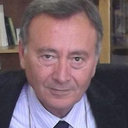Motor outcome and allodynia are largely unaffected by novel olfactory ensheathing cell grafts to repair low-thoracic lesion gaps in the adult rat spinal cord.
Palabras clave
Abstracto
Olfactory ensheathing cells (OEC) are a promising graftable cell population for improving functional outcomes after experimental spinal cord injury. However only few studies have focused on experimental models with large cavitations, which require bridging substrates to transfer and maintain the donor cells within the lesion site. Here, a state-of-the-art collagen-based multi-channeled three dimensional scaffold was used to deliver olfactory ensheathing cells to 2 mm long unilateral low-thoracic hemisection cavities. For a period of 10 weeks, allodynia of the hindpaws was monitored using the von Frey hair filament test, while an extensive analysis of motor ability was performed with use of the CatWalk gait analysis system and the BBB locomotor scale. No substantial improvement or deterioration of motor functions was induced and there was no effect on lesion-induced allodynia. On the basis of these data, we conclude that relatively large spinal cord lesions with cavitation may present additional hurdles to the therapeutic effect of OEC. Future studies are needed to address the nature that such lesion cavities place on cell grafts.


